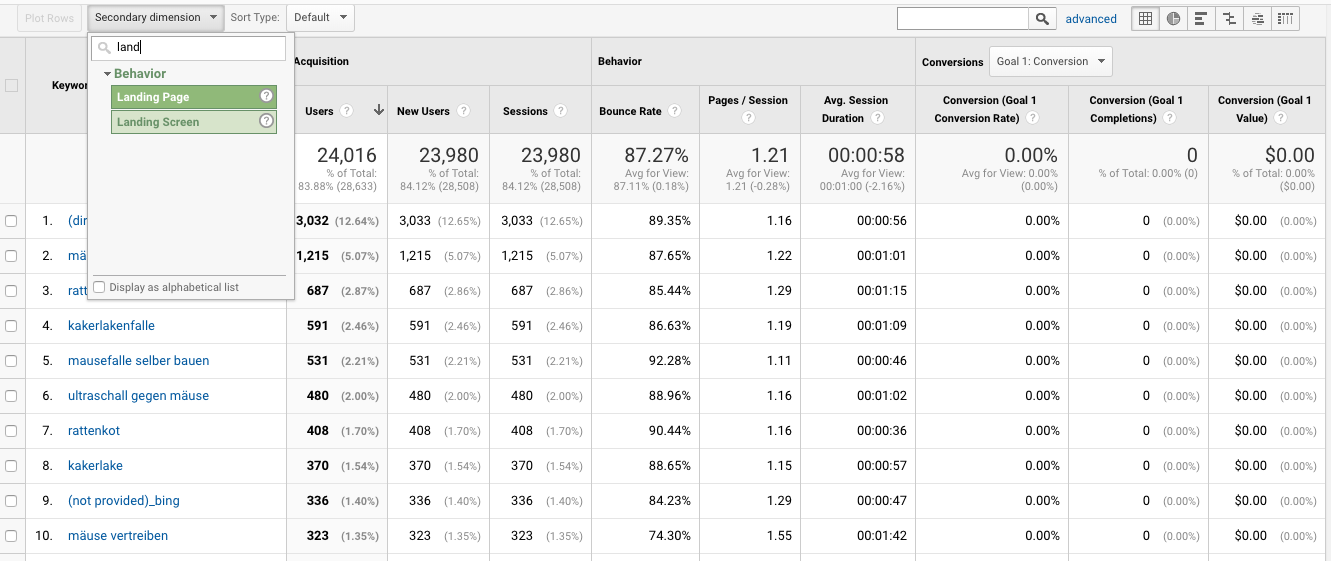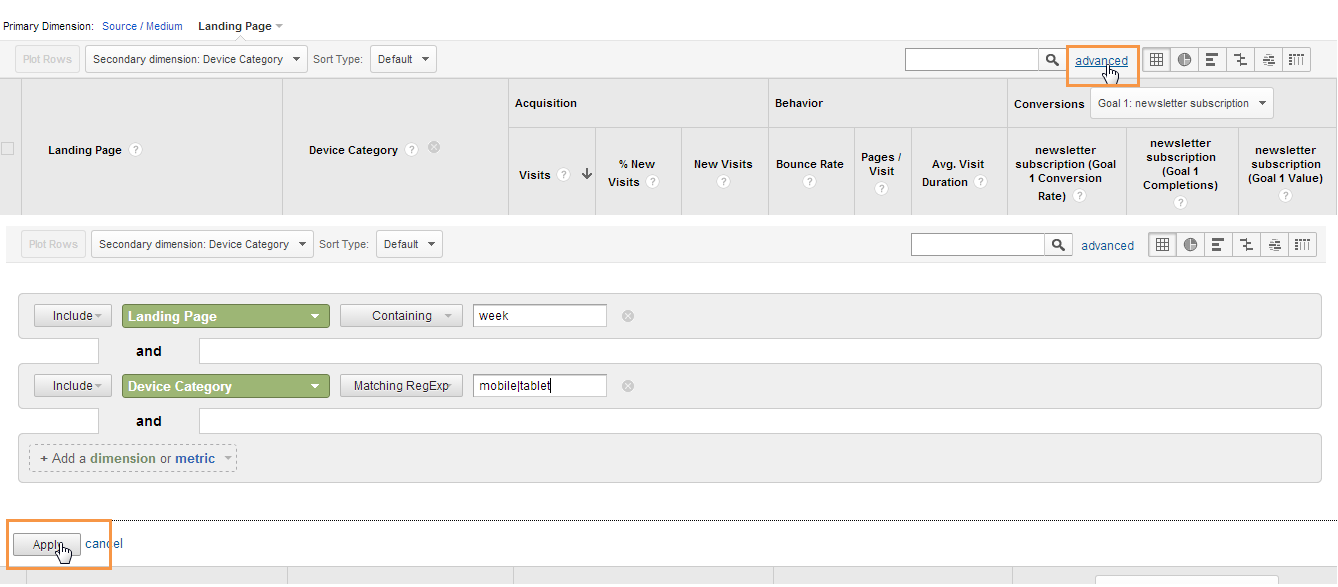Improving Data Precision: Google Analytics Secondary Dimension Insights
Improving Data Precision: Google Analytics Secondary Dimension Insights
Blog Article
Opening the Power of Secondary Dimension Analytics for Enhanced Data Insights and Decision-Making
In the realm of data analytics, key measurements often take the spotlight, yet truth deepness of insights lies within the world of additional dimensions. These additional data points provide a nuanced viewpoint that can brighten patterns and relationships not conveniently noticeable in the beginning glance. By utilizing the power of additional dimension analytics, organizations can unveil covert trends, discover relationships, and remove a lot more significant conclusions from their data. The capacity for improved decision-making via the utilization of these second dimensions is large, promising a deeper understanding of complicated information collections and paving the method for even more informed strategic selections.
Value of Additional Dimensions
Discovering the significance of second measurements in analytics introduces the concealed layers of information insights critical for notified decision-making in numerous domain names. Additional measurements supply a deeper understanding of key information by providing additional context and perspectives. By including second dimensions right into analytics, organizations can remove extra nuanced and thorough understandings from their datasets.
One key value of secondary measurements is their ability to section and categorize key information, permitting a much more comprehensive evaluation of details subsets within a dataset. This segmentation allows companies to identify patterns, patterns, and outliers that might not appear when considering the information as a whole. Additionally, second dimensions aid in uncovering correlations and reliances in between different variables, leading to even more exact forecasting and anticipating modeling.
In addition, second dimensions play a vital duty in boosting information visualization and reporting. By including additional measurements to visualizations, such as graphs or graphes, experts can create more useful and insightful representations of information, assisting in much better communication of searchings for to stakeholders. Generally, the combination of secondary measurements in analytics is instrumental in unlocking the complete possibility of information and driving evidence-based decision-making.
Key Advantages of Using Second Dimensions
Making use of second measurements in analytics offers companies a strategic benefit by boosting the depth and granularity of information insights. By dissecting data utilizing additional measurements such as time, place, tool kind, or customer demographics, companies can reveal patterns, fads, and connections that may otherwise remain concealed.
Furthermore, the usage of second dimensions boosts the context in which primary data is analyzed. It supplies a more comprehensive view of the partnerships in between different variables, allowing organizations to make enlightened choices based on a much more alternative understanding of their information. Additionally, secondary measurements facilitate the identification of outliers, anomalies, and areas for optimization, eventually leading to much more effective methods and enhanced end results. By leveraging additional measurements in analytics, companies can harness the full possibility of their information to drive much better decision-making and achieve their company purposes.
Advanced Information Evaluation Techniques
A deep dive into sophisticated information analysis techniques discloses innovative techniques for removing important understandings from complex datasets. One such strategy is artificial intelligence, where algorithms are utilized to determine patterns within data, anticipate end results, and make data-driven choices. This method permits the automation of analytical model structure, enabling the handling of large quantities of data at a quicker rate than traditional approaches.
An additional sophisticated strategy is predictive analytics, which makes use of analytical algorithms and device understanding methods to forecast future results based upon historical information. By analyzing patterns and patterns, organizations can expect customer actions, market patterns, and potential risks, equipping them to make positive choices.
Moreover, message mining and sentiment evaluation are valuable techniques for removing understandings from unstructured data resources such as social media remarks, customer testimonials, and study feedbacks. By evaluating message data, companies moved here can comprehend client opinions, determine arising patterns, and boost their services or products based upon comments.
Enhancing Decision-Making Via Secondary Measurements

Enhancing decision-making through second dimensions makes it possible for companies to make even more informed and targeted strategic selections. As an example, by segmenting client data based on additional measurements like buying history or involvement levels, business can tailor their advertising techniques to certain target market sections, causing enhanced conversion rates and customer complete satisfaction. Additional dimensions can assist determine relationships and connections in between various variables, making it possible for organizations to make data-driven choices that drive development and success.
Executing Second Dimension Analytics
When integrating secondary dimensions in analytics, companies can unlock deeper insights that drive calculated decision-making and boost total performance. This entails understanding the particular inquiries the company seeks to answer and the data factors needed to address them.

Additionally, companies need to take advantage of advanced analytics tools and modern technologies to improve the procedure of incorporating second measurements. These devices can automate data handling, analysis, and visualization, allowing companies to concentrate on interpreting understandings instead of hand-operated information adjustment.
Verdict
To conclude, additional dimension analytics play a critical role in improving data insights and decision-making processes. By utilizing advanced information evaluation strategies and executing secondary dimensions properly, companies can open the power of their information to drive critical company decisions. The vital benefits of using second dimensions can not be overemphasized, as they provide a much deeper understanding of information patterns and relationships. It is this website vital for organizations to utilize second measurement analytics to stay affordable in today's data-driven landscape.
In the world of information analytics, main dimensions typically take the spotlight, yet the real deepness of understandings exists within the realm of secondary dimensions.Making use of second dimensions in analytics offers organizations a strategic benefit by enhancing the depth and granularity of data insights. By leveraging additional dimensions in analytics, organizations can harness the complete possibility of their information to drive far better decision-making and achieve their company goals.
Carrying out information validation procedures and routine audits can aid preserve information high quality and integrity.
By using innovative information analysis strategies and implementing additional dimensions properly, organizations can open the power of their data to drive critical company choices.
Report this page